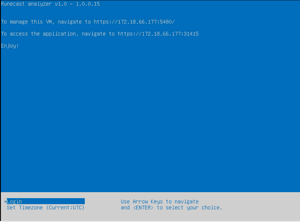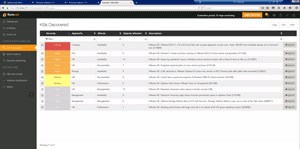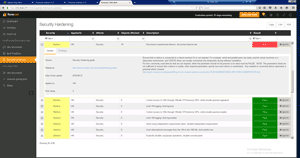How To Guy
Using Runecast to Monitor vSphere Environments
It's a cost-effective alternative to vRealize Operations Manager.
I currently use VMware's vRealize Operations (vROPs) Manager to proactively monitor my customers' VMware environments. The vROPS solution allows me to unify my management of VMware vSphere local and cloud infrastructures, Amazon Web Services (AWS) virtual machines (VMs) and storage. vROPs also allows me to have one interface to view my configuration, performance, predictive analytics and capacity in any area of my VMware infrastructures.
However, cost does play a big factor considering whether to add this solution to a customer infrastructure. The size of the environment and budget are usually determining factors.
That's why I was interested in Runecast, a new solution I came across at VMworld 2015. At first I was a bit skeptical that it could compete with vROPS and deliver as promised. Once I returned to the office, I decided to give it a try.
 [Click on image for larger view.]
Figure 1. The Runecast analyzer.
[Click on image for larger view.]
Figure 1. The Runecast analyzer.
I logged onto Runecast's Web site and registered for a 30-day trial. The download consists of the Runecast analyzer appliance (an *.ova deployable VM), an offline update application and a user guide.
Once I downloaded the items, I deployed the appliance. It takes less than five minutes to deploy, including network configuration. Here's the configuration process:
- On the Runecast Web site, click "Download Analyzer Appliance."
- Complete the registration form.
- From the email address you registered open the link in your email to download the appliance.
- Deploy the downloaded *.ova from the vSphere Web Client.
- Follow the URLs to manage and access the appliance (Figure 1.)
- Login as rcuser, using Runecast as initial password.
- Change your password and add your vCenter settings.
- Click Analyze on the Runecast dashboard and start the analyzing process.
I was then able to start analyzing my environment immediately. I glanced through the user guide to get started, but you really don't need it because Runecast's dashboards are so user friendly, as you can see in Figure 2.
 [Click on image for larger view.]
Figure 2. The Runecast Dashboard.
[Click on image for larger view.]
Figure 2. The Runecast Dashboard.
Runecast's proactive monitoring focuses on the most important items, so that you can immediately attend to them. Runecast is granular, but not to the point of distracting you so much that you need to have a team meeting to analyze siloed items within your environment.
Runecast provides VMware knowledgebase articles, best practices and security hardening recommendations that are constantly updated and centralized within its dashboard for immediate use. Runecast tailors each piece of information for your VMware infrastructure, and removes the guesswork around what needs correcting.
My favorite feature is the security hardening analysis. If you need to be security compliant, Runecast provides a detailed report and the option to accept -- or ignore, if you wish -- its recommendations (see Figure 3).
 [Click on image for larger view.]
Figure 3. Runecast's Security Hardening Tab.
[Click on image for larger view.]
Figure 3. Runecast's Security Hardening Tab.
You can even add filtering with tracking, so a security auditor will have access to environment's information with validated audit reporting.
Runecast is a smaller footprint proactive monitoring solution compared to VMware's vROPS. However, it will expose configuration issues in your environment. The exposure provides you with information, integrated knowledgebase articles, best practices, and identification of root causes that easily integrate into your current VMware infrastructure.
Runecast is a solid proactive monitoring solution that makes your infrastructure more secure, since all your data is processed in-house. I highly recommend giving it a try.
About the Author
James Brown, vExpert, VCP, MCSE, is a senior virtualization engineer and CEO of Virtuxperts and VMware Users Group Leader in Las Vegas, NV. James' area of expertise includes virtualization, infrastructure and Windows systems.